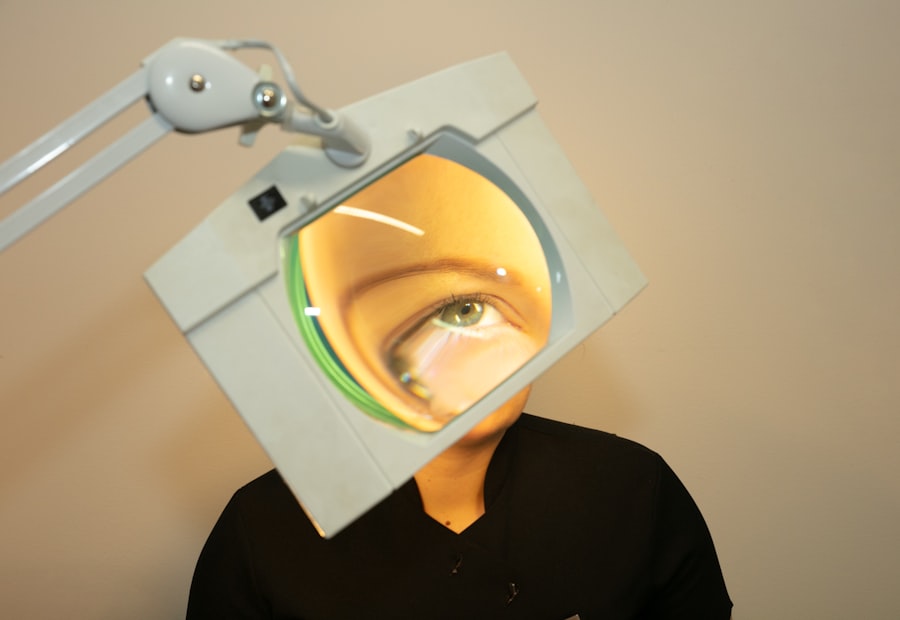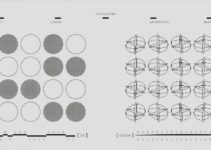As I delve into the fascinating world of computer vision technology, I find myself captivated by its ability to enable machines to interpret and understand visual information from the world around us. This field, a subset of artificial intelligence, focuses on how computers can be programmed to gain understanding from digital images or videos. The implications of this technology are vast, ranging from enhancing user experiences in everyday applications to revolutionizing entire industries.
By mimicking human visual perception, computer vision allows machines to perform tasks that require visual cognition, such as recognizing faces, identifying objects, and even interpreting complex scenes. The significance of computer vision technology cannot be overstated. It serves as a bridge between the digital and physical worlds, allowing for seamless interaction between humans and machines.
As I explore this topic further, I am struck by the potential it holds for transforming various sectors, including healthcare, automotive, and security. The ability to analyze visual data at scale opens up new avenues for innovation and efficiency, making it an exciting area of study and application.
Key Takeaways
- Computer vision technology enables machines to interpret and understand the visual world, similar to human vision.
- The evolution of computer vision technology has seen significant advancements in image recognition, object detection, and video analysis.
- Computer vision technology is widely used in various applications such as autonomous vehicles, healthcare, retail, and security surveillance.
- Advancements in deep learning and neural networks have greatly improved the accuracy and performance of computer vision systems.
- Computer vision technology has made a significant impact in industries such as healthcare, automotive, retail, and manufacturing, revolutionizing processes and improving efficiency.
Evolution of Computer Vision Technology
Reflecting on the evolution of computer vision technology, I am reminded of its humble beginnings in the 1960s when researchers first began to explore the idea of enabling machines to “see.
However, as computational power increased and algorithms became more sophisticated, the field began to gain momentum. The introduction of machine learning techniques in the 1980s marked a significant turning point, allowing computers to learn from data rather than relying solely on hard-coded rules.
As I trace the timeline of advancements in computer vision, I notice a pivotal moment in the 2010s with the rise of deep learning. This breakthrough allowed for the development of convolutional neural networks (CNNs), which dramatically improved the accuracy of image classification and object detection tasks. The combination of vast amounts of data and powerful computing resources led to unprecedented progress in the field.
Today, computer vision technology is not only more accurate but also more accessible, with numerous open-source frameworks available for developers and researchers alike.
Applications of Computer Vision Technology
The applications of computer vision technology are as diverse as they are impactful. In my exploration of this field, I have encountered numerous use cases that highlight its versatility. One prominent application is in the realm of autonomous vehicles. By utilizing computer vision systems, these vehicles can interpret their surroundings, recognize obstacles, and make real-time decisions to navigate safely.
This technology is not only enhancing transportation efficiency but also has the potential to reduce accidents caused by human error. Another area where computer vision is making waves is in healthcare. I find it remarkable how this technology is being employed to analyze medical images, such as X-rays and MRIs, with incredible precision.
By assisting radiologists in detecting anomalies and diagnosing conditions, computer vision can lead to earlier interventions and improved patient outcomes. Furthermore, applications extend beyond diagnostics; for instance, computer vision is being used in telemedicine to monitor patients remotely through video analysis.
Advancements in Deep Learning and Neural Networks
| Metrics | 2018 | 2019 | 2020 |
|---|---|---|---|
| Number of research papers | 5,000 | 7,000 | 9,000 |
| Number of deep learning frameworks | 10 | 15 | 20 |
| Accuracy of image recognition models | 85% | 90% | 95% |
| Number of neural network layers in state-of-the-art models | 100 | 200 | 300 |
As I delve deeper into the advancements in deep learning and neural networks, I am continually amazed by their transformative impact on computer vision technology.
These networks are designed to automatically learn hierarchical features from images, allowing them to recognize patterns with remarkable accuracy.
This capability has led to significant improvements in tasks such as facial recognition and image segmentation. Moreover, the ongoing research in neural network architectures continues to push the boundaries of what is possible in computer vision. Techniques such as transfer learning enable models trained on large datasets to be fine-tuned for specific tasks with relatively little data.
This adaptability is particularly beneficial for industries where labeled data may be scarce or expensive to obtain. As I observe these advancements unfold, I am excited about the potential for even more sophisticated models that can tackle increasingly complex visual challenges.
Impact of Computer Vision Technology in Various Industries
The impact of computer vision technology across various industries is profound and far-reaching. In retail, for instance, I have seen how businesses are leveraging this technology to enhance customer experiences through personalized recommendations and automated checkout systems. By analyzing customer behavior and preferences through video feeds, retailers can optimize store layouts and inventory management, ultimately driving sales and improving customer satisfaction.
In manufacturing, computer vision plays a crucial role in quality control processes. By employing visual inspection systems powered by this technology, companies can detect defects in products at an unprecedented speed and accuracy. This not only reduces waste but also ensures that only high-quality products reach consumers.
As I reflect on these applications, it becomes clear that computer vision is not merely a tool; it is a catalyst for innovation that is reshaping industries and redefining standards.
Challenges and Limitations of Computer Vision Technology
Despite its many advantages, I recognize that computer vision technology is not without its challenges and limitations. One significant hurdle is the issue of data quality and bias. As I explore this topic further, I realize that the effectiveness of computer vision systems heavily relies on the quality of the training data used to develop them.
If the data is biased or unrepresentative, it can lead to inaccurate predictions and reinforce existing stereotypes. Another challenge lies in the complexity of real-world environments. While computer vision systems excel in controlled settings, they often struggle with variability in lighting conditions, occlusions, and diverse backgrounds.
As I consider these limitations, I am reminded that ongoing research is essential to address these issues and improve the robustness of computer vision algorithms.
Future Trends and Developments in Computer Vision Technology
Looking ahead, I am excited about the future trends and developments in computer vision technology that promise to further enhance its capabilities. One area that intrigues me is the integration of augmented reality (AR) with computer vision systems. As AR technology continues to advance, I envision a future where users can interact with digital information overlaid on their physical surroundings in real-time.
This could revolutionize fields such as education, training, and entertainment by providing immersive experiences that blend the virtual and real worlds seamlessly. Additionally, I anticipate that advancements in edge computing will play a significant role in the future of computer vision. By processing visual data closer to where it is generated—such as on devices like smartphones or IoT sensors—latency can be reduced, enabling real-time applications that were previously unattainable.
As I reflect on these trends, I am filled with optimism about the potential for computer vision technology to continue evolving and shaping our interactions with the world around us.
Ethical and Privacy Considerations in Computer Vision Technology
As I explore the ethical and privacy considerations surrounding computer vision technology, I am acutely aware of the responsibilities that come with its deployment. The ability to capture and analyze visual data raises important questions about consent and surveillance. In an age where privacy concerns are paramount, it is crucial for developers and organizations to prioritize ethical practices when implementing computer vision systems.
Moreover, I recognize that transparency is key in addressing public concerns about bias and discrimination within these technologies. As I engage with this topic further, I understand that fostering trust among users requires clear communication about how data is collected, used, and protected. By prioritizing ethical considerations alongside technological advancements, we can ensure that computer vision technology serves as a force for good while respecting individual rights and freedoms.
In conclusion, my exploration of computer vision technology has revealed its immense potential to transform our world across various domains. From its evolution over the decades to its current applications and future trends, it is clear that this field will continue to shape our interactions with technology in profound ways. However, as we embrace these advancements, we must remain vigilant about ethical considerations and strive for responsible development that prioritizes privacy and fairness.
FAQs
What is computer vision?
Computer vision is a field of artificial intelligence that enables computers to interpret and understand the visual world. It involves the development of algorithms and techniques for machines to gain high-level understanding from digital images or videos.
What are the applications of computer vision?
Computer vision has a wide range of applications, including facial recognition, object detection and tracking, image and video analysis, medical image analysis, autonomous vehicles, augmented reality, and robotics.
How does computer vision work?
Computer vision works by using algorithms to process and analyze visual data from images or videos. This involves tasks such as image recognition, object detection, image segmentation, and depth estimation.
What are the key components of computer vision?
The key components of computer vision include image acquisition, preprocessing, feature extraction, object recognition, and interpretation. These components are used to enable machines to understand and interpret visual data.
What are some challenges in computer vision?
Challenges in computer vision include handling variations in lighting, viewpoint, and occlusions, as well as developing algorithms that can accurately interpret and understand complex visual scenes. Additionally, ethical considerations around privacy and bias in computer vision systems are also important challenges to address.
Get more stuff like this
Subscribe to our mailing list and get interesting stuff and updates to your email inbox.
Thank you for subscribing.
Something went wrong.




